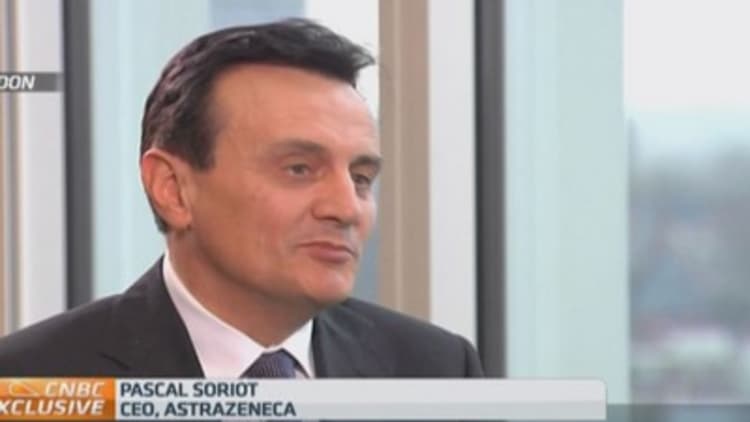
Mergers and acquisitions broke a seven-year losing streak in 2014, and with $3.48 trillion worth of deals, it was the best 12 months since pre-financial crisis 2007.
Global volumes were up 22 percent on 2013 and at the highest level since a peak of $4.62 trillion in 2007, according to data from trading platform Dealogic.
CNBC takes a look at some of the global highlights of the year.
Healthcare successes—and fails
The healthcare industry spent much of the year in a flurry of dealmaking. It was the most targeted industry for mergers and acquisitions, with a record $403.4 billion in deals—either attempted or successful.
Generic drugmaker Actavis was particularly active, following up its $28.4 billion purchase of Forest Laboratories in February with a $65.7 billion bid for Allergan in November.
Meanwhile, medical device manufacturer Medtronic succeeded with a $46.8 billion offer for Ireland's Covidien.
However, the U.S. crackdown on tax inversions—the controversial practice where companies acquire foreign firms for tax advantages—scuppered AbbVie's $56.1 billion bid for Ireland's Shire.
Read MoreCNBC explains: Tax inversions
Another failure was Pfizer's bid for U.K. rival AstraZeneca, which at $122.6 billion was the biggest of any proposed deal this year. The approach from the U.S. pharma giant was opposed by AstraZeneca and came under scrutiny by U.K. politicians following to claims the target company that the development of lifesaving drugs might be delayed by the acquisition.

Top deal ex-US
Kinder Morgan's $76.2 billion purchase of the outstanding equity in Kinder Morgan Energy Partners, Kinder Morgan Management and El Paso Pipeline Partners proved this year's biggest deal, and the second-largest energy transaction ever.
Dealmakers were also busy outside of the U.S., with Chinese volumes at their highest ever at $277 billion.
Excluding the U.S., the biggest deal was the $40.6 billion merger of the world's two biggest cement makers, Holcim and Lafarge. On Wednesday, Bruno Lafont, currently the CEO of France's Lafarge, was named as the chief executive of the new combined company. The deal is due to complete in the first half of 2015.
The dealmakers who won
Goldman Sachs advised on 392 deals worth a total of just over $1 billion, making it once again the top-performing bank for dealmaking. JPMorgan and Morgan Stanley came next, with Barclays the best-performing non-U.S. player, in sixth place.
Companies that split
There were major companies that took the reverse tack and wither carved up or spun off assets, sometimes in response to demands from activist investors.
Around October, Hewlett-Packard announced plans to split its company in two, while eBay said it would spin-off PayPal, the profitable online payments business it bought in 2002.
More recently, HeidelbergCement announced on Christmas Eve that it would sell of its North American and U.K. building products businesses for up to $1.4 billion. The transaction is expected to close in the first three months of 2015.

